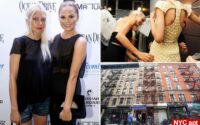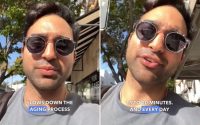‘Gen Z Yellow’ isn’t making a ‘splash,’ fashion experts say
Is yellow the new pink? Gen Z doesn’t seem to think so.
Despite trendsetters’ best attempts to market “Gen Z Yellow” to their target audience, the generation’s so-called namesake color isn’t making a splash — and pales in comparison to “Millennial Pink.”
Laurie Pressman, the vice president of the Pantone Color Institute, told The Post that “society imposed” the canary hue onto Gen Z, whereas its pink predecessor “came about organically.”
“[That is] another reason for the dimming of the influence of Gen Z Yellow vs. Millennial Pink,” Pressman said in an email.
Semantics aside, the sunny shade just isn’t universally charming.
“This may be simple, but quite frankly, Gen Z Yellow isn’t the most wearable — I would go as far to say that it’s intimidating,” trend forecaster Kendall Becker, who boasts more than 31,200 followers on TikTok, told The Post. “[The] majority of dressers aren’t going to see a bright yellow dress on the rack and walk right up. This hue takes a bit of a teaching moment to ease into styling it.”

Meanwhile, Millennial Pink gripped the masses and was adopted into every aspect of life — from fashion trends to restaurant decor — and was even named Pantone’s 2016 Color of the Year by a different moniker, “Rose Quartz.”
Gen Z Yellow, which bares similarity to Pantone’s 2021 Color of the Year, was first attributed to the youngest generation in 2017 by the now-defunct site Man Repeller. However, experts say the color has yet to grip the masses like the dusty rose shade once did — and still does.

“By 2018, the entire internet will probably look like the inside of a banana,” author Haley Nahman wrote at the time, citing yellow-colored things like mustard bottles as inspiration.
But her forecast did not weather the pink wave.
TikTok’s obsession with Barbiecore paid homage to the never-ending obsession with pink, taking cues from Margot Robbie in the upcoming “Barbie” film, Kim Kardashian, Megan Fox and Lizzo, all of whom have flaunted the neon pigment in Instagram snaps and on the red carpet.
Even Pantone seems to be marinating in magenta eight years after Millennial Pink seeped into the mainstream. Viva Magenta was crowned Pantone’s 2023 Color of the Year and is described as “brave and fearless.”
If it seems like everyone is thinking pink, that’s right. According to data from French fashion trend forecasting company Heuritech, pink — along with green and orange — is set to dominate fashion in the next 12 months.
But it wasn’t just that yellow was drowned out in the bubble gum wave, it was “simply less successful” than its rosy counterpart, a company spokesperson told The Post.

But Mandy Lee, a fashion forecaster known as @oldloserinbrooklyn online, isn’t convinced. Yellow isn’t exactly “out,” she said, it just never had its moment.
“I haven’t seen yellow make a splash on the runway or mainstream fashion in a significant enough way to agree with yellow becoming more popular than pink,” the content creator told The Post, noting that neither color will necessarily be rejected by Gen Z.
It could be hard to pin one color on Gen Z, whose “individualistic” mindset transcends its style. Forbes dubbed them “brand agnostic.” When styling themselves, they hunt for pieces “that match their individual personality and communicate their identity” instead of adhering to what’s in vogue.
If they aren’t even label loyal, how can they be defined by one hue?
“Whereas millennials looked to band together to create change, Gen Z is more individualistic in style,” Pressman said, “and we are living in a time where it is all about unique identity and personalized self-expression.”


